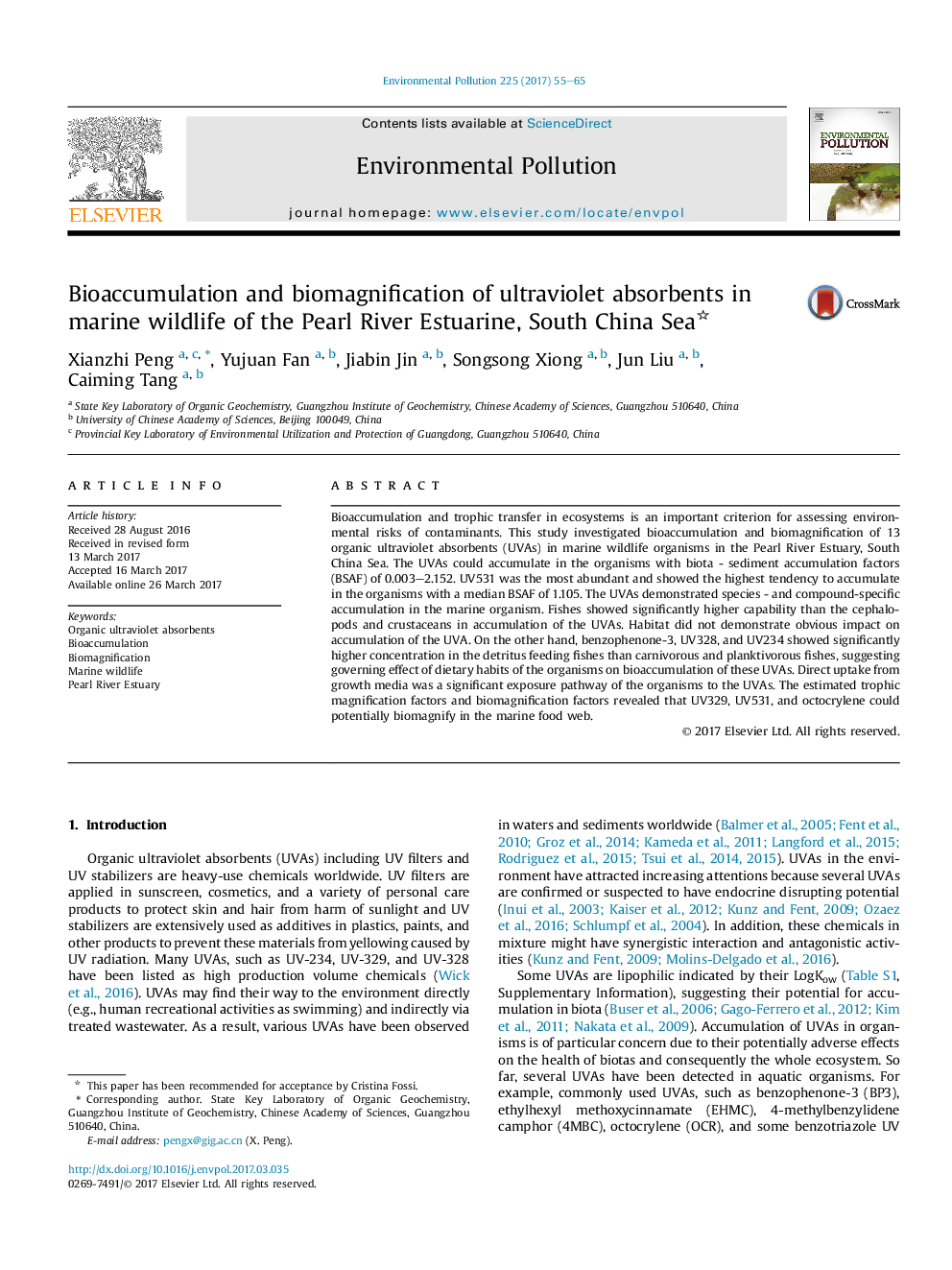| کد مقاله | کد نشریه | سال انتشار | مقاله انگلیسی | نسخه تمام متن |
|---|---|---|---|---|
| 5748911 | 1619148 | 2017 | 11 صفحه PDF | دانلود رایگان |

- Organic ultraviolet absorbents (UVAs) could bio-accumulate.
- Bio-accumulation of the UVAs was species- and compound-specific.
- Dietary habits of the organisms impact on bioaccumulation of the UVAs.
- Direct uptake from growth media was a significant exposure pathway to the UVAs for organisms.
- Some UVAs have biomagnifying potential in marine food web.
Bioaccumulation and trophic transfer in ecosystems is an important criterion for assessing environmental risks of contaminants. This study investigated bioaccumulation and biomagnification of 13 organic ultraviolet absorbents (UVAs) in marine wildlife organisms in the Pearl River Estuary, South China Sea. The UVAs could accumulate in the organisms with biota - sediment accumulation factors (BSAF) of 0.003-2.152. UV531 was the most abundant and showed the highest tendency to accumulate in the organisms with a median BSAF of 1.105. The UVAs demonstrated species - and compound-specific accumulation in the marine organism. Fishes showed significantly higher capability than the cephalopods and crustaceans in accumulation of the UVAs. Habitat did not demonstrate obvious impact on accumulation of the UVA. On the other hand, benzophenone-3, UV328, and UV234 showed significantly higher concentration in the detritus feeding fishes than carnivorous and planktivorous fishes, suggesting governing effect of dietary habits of the organisms on bioaccumulation of these UVAs. Direct uptake from growth media was a significant exposure pathway of the organisms to the UVAs. The estimated trophic magnification factors and biomagnification factors revealed that UV329, UV531, and octocrylene could potentially biomagnify in the marine food web.
147
Journal: Environmental Pollution - Volume 225, June 2017, Pages 55-65